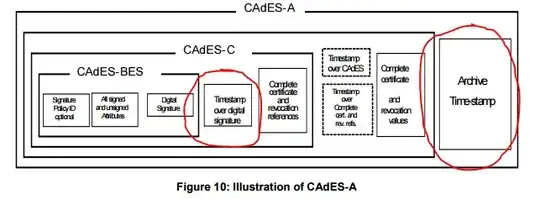Latest ETSI standard CAdES, XAdES and PAdES require for baseline profile LTA to fulfill previous LT, T and B levels. Summarizing,the conformance requirements are:
- B : Base signature with content-type, signing-time and signing-certificate
- T: Signature timestamp
- LT: Certificate and revocation values
- LTA: Archive timestamp
More or less are simplifications over the previous BES, EPES, T, XL, and A levels, where the requirement is also present

Applying a timestamp is an expensive process in time and money, because it is usually performed by an external trusted CA
Question: What is the reason for applying two time stamps when building an LTA directly, bearing in mind that the last time stamp protects all content? Why -T timestamp is not optional?